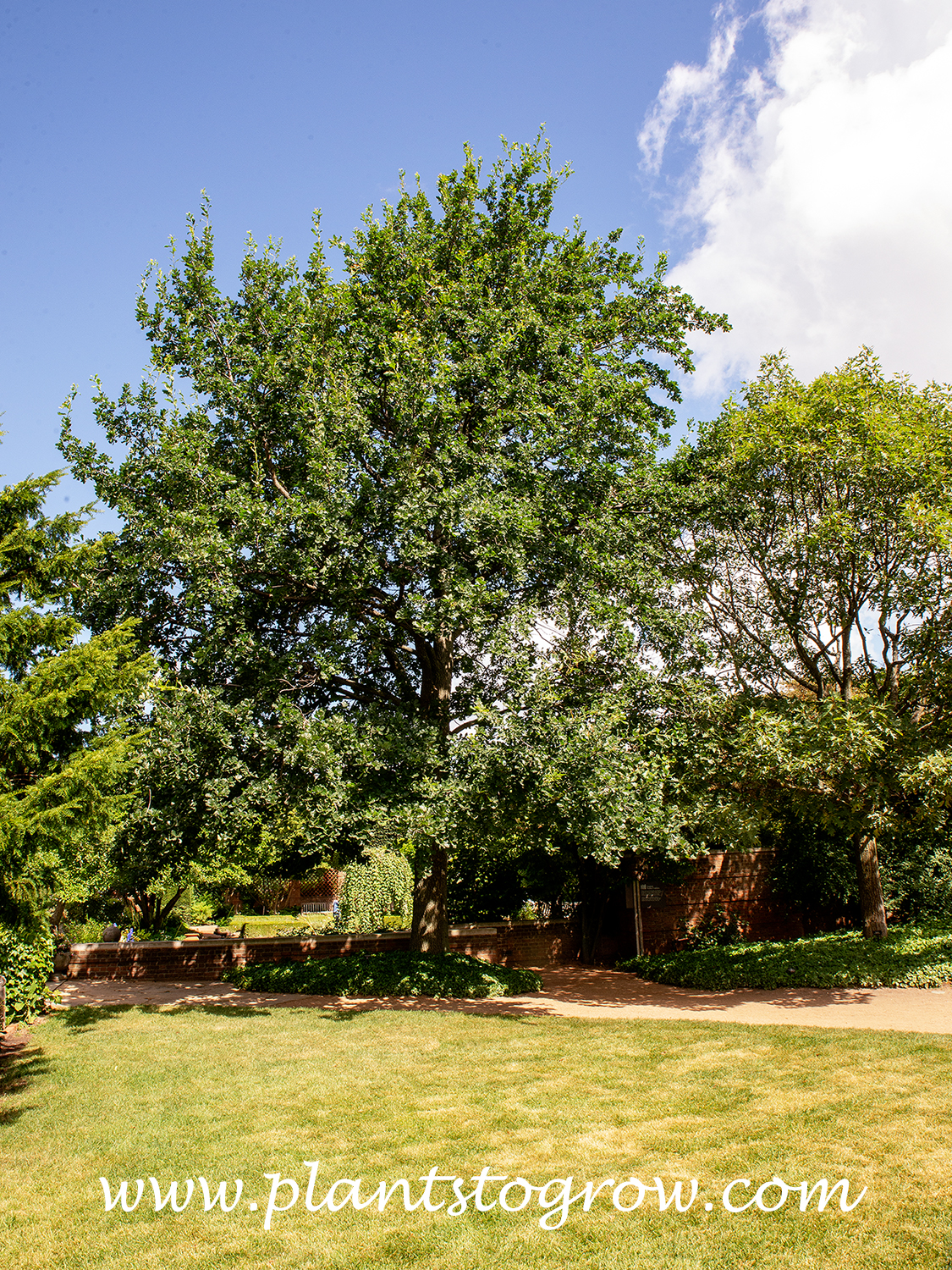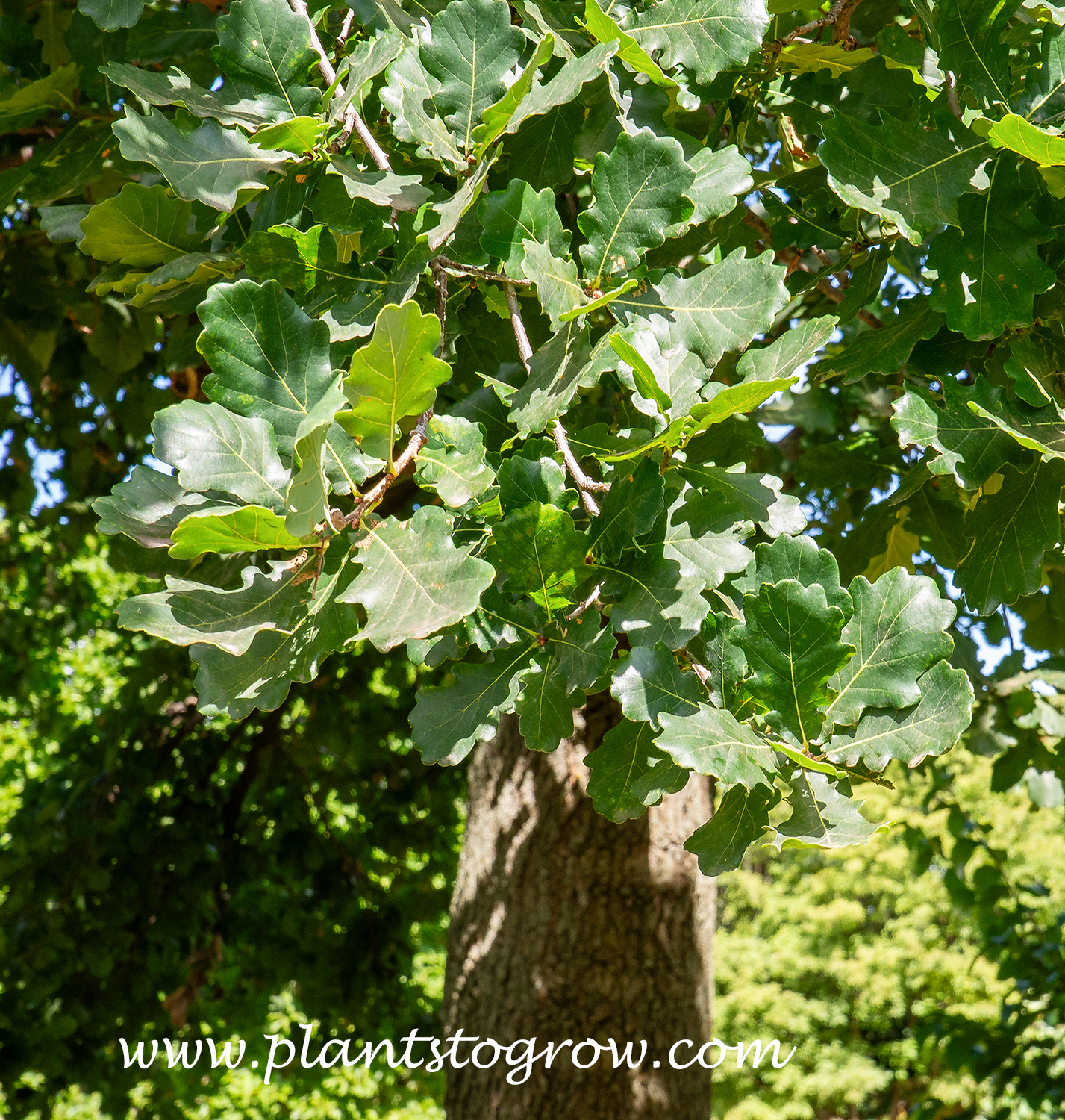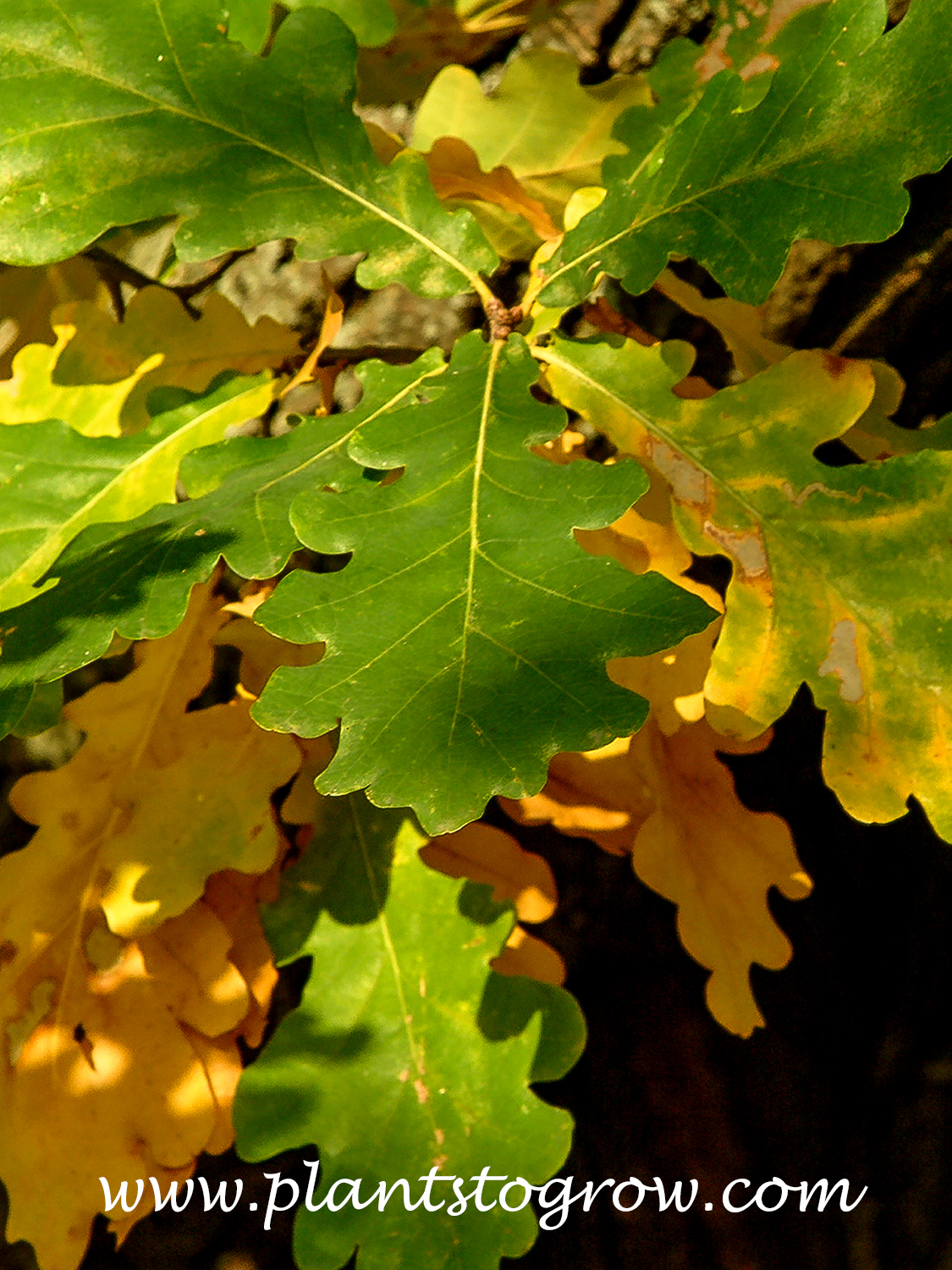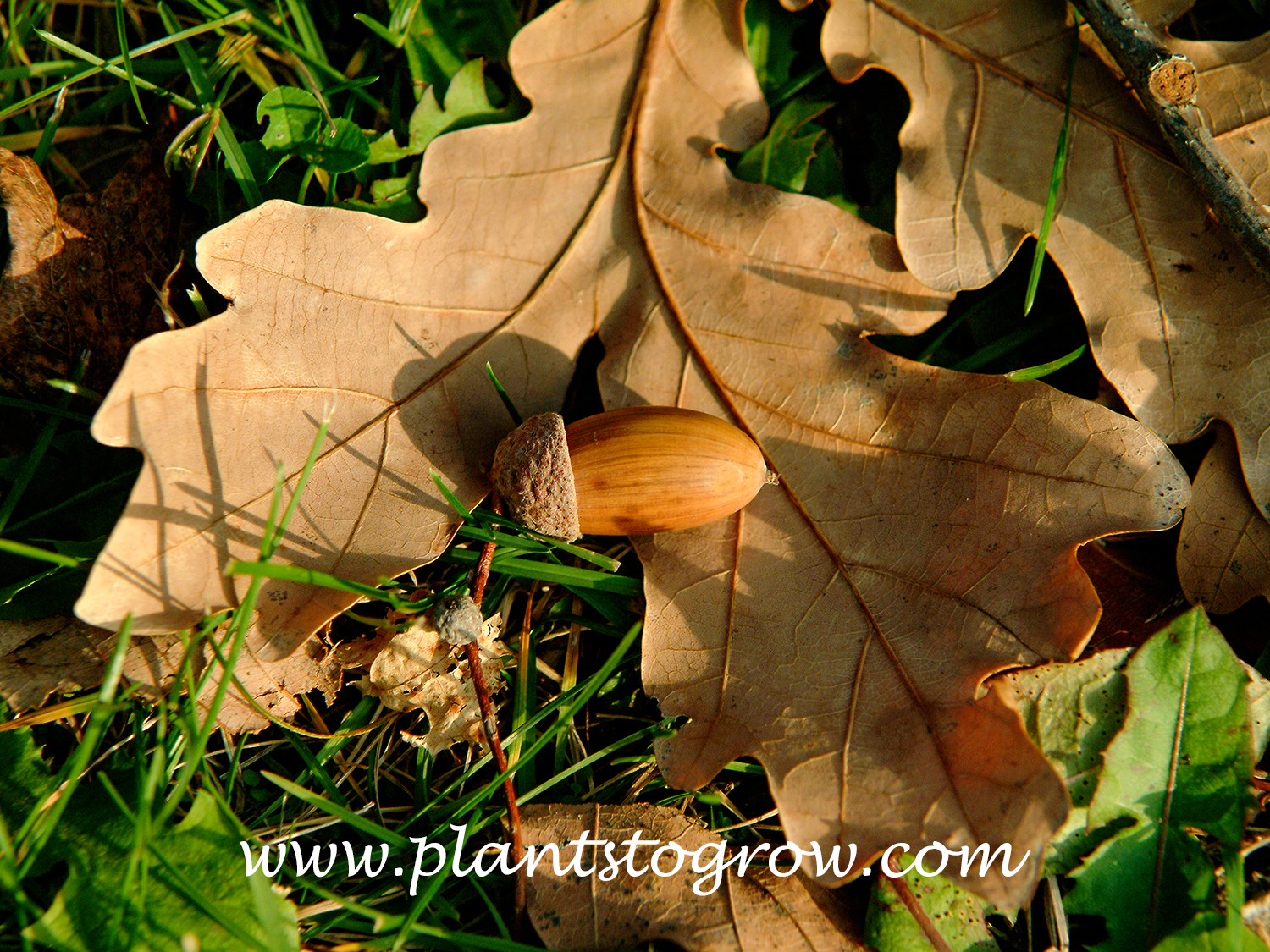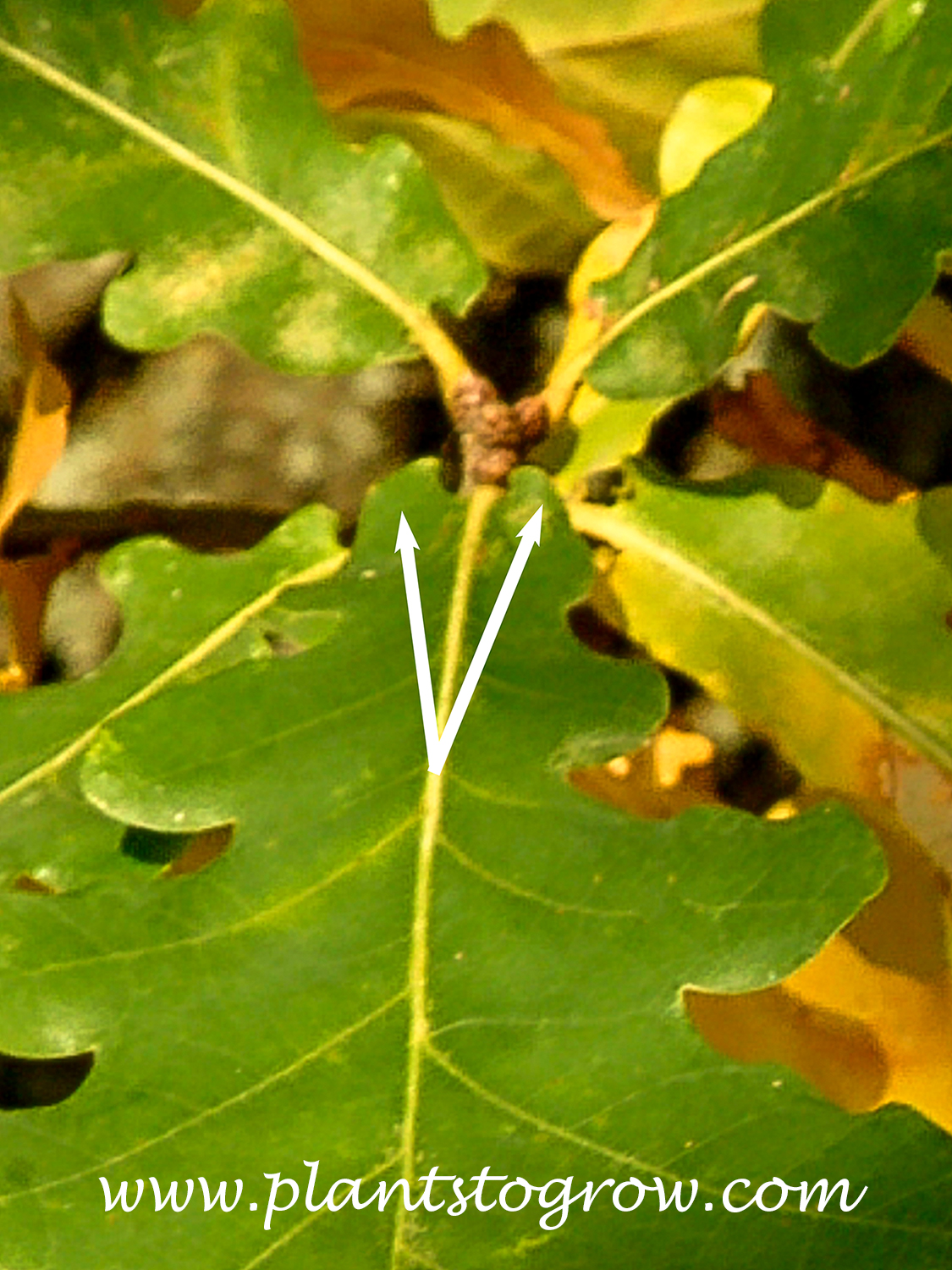| Description | English Oak (Quercus robur) is a large deciduous hardy tree. |
|---|---|
| Pronunciation | (KWERK-us)(ROE-ber) |
| Plant Type | Trees Deciduous |
| Hardiness Zone | 5A through 8B |
| Sunlight | full |
| Moisture | average, medium |
| Soil & Site | average, pH tolerant |
| Flowers | Are male and female catkins that are insignificant. |
| Fruit | Acorns are long and skinny |
| Leaves | Green with no fall color. Sessle or almost, shallowly irregularly lobed with an auricle (eared at the base). |
| Stems | Bark is deeply furrowed grayish black. |
| Dimensions | 40-70 by 40-70 feet (HS) broadly rounded and spreading |
| Propagation | Seeds (acorns) elongated conical one or two on a slender stem. |
| Native Site | Native to mixed woodland areas from the British Isles to the Caucasus |
| Misc Facts | The genus name is derived from the classical Latin term for oak trees. The epithet (species) originates from the Latin word meaning "robust," which refers to the tree's strength and durability. Widely planted in North America since the 1600 |
| Notes & Reference | #01-Manual of Woody Landscape Plants (Michael Dirr), #144-Missouri Botanical Gardens website (www.missouribotanicalgarden.org) |

Cart
